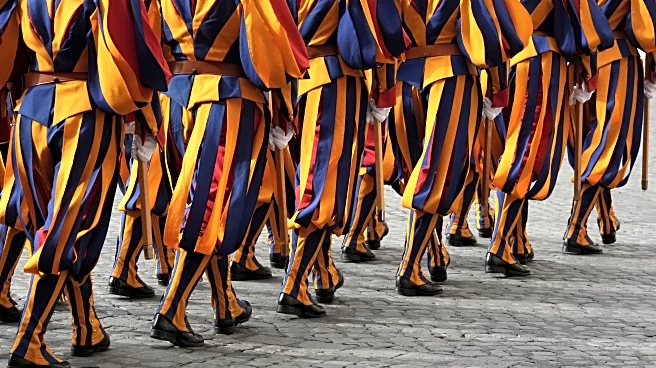What's Happening?
Pope Leo XIV has disclosed his favorite films, which include 'It’s a Wonderful Life,' 'The Sound of Music,' 'Ordinary People,' and 'Life Is Beautiful.' This announcement comes as the Pope prepares to meet
with prominent figures from the film industry at the Vatican. The films chosen by Pope Leo span several decades of the 20th century, reflecting themes of hope, love, and human values. The Vatican has stated that the Pope aims to deepen dialogue with the cinema world, exploring how artistic creativity can contribute to the Church's mission and the promotion of human values.
Why It's Important?
The Pope's engagement with the film industry highlights the Vatican's interest in using popular culture as a medium to promote human values and dialogue. By selecting films that emphasize themes of hope and resilience, Pope Leo XIV is signaling the importance of these narratives in fostering a deeper understanding of human experiences. This interaction with the cinema world could lead to increased collaboration between the Church and filmmakers, potentially influencing the types of stories that are told and how they resonate with global audiences.
What's Next?
A number of film industry heavyweights, including Cate Blanchett, Spike Lee, and Gaspar Noé, are expected to visit the Vatican for an audience with Pope Leo XIV. This meeting may pave the way for future collaborations or initiatives that integrate cinematic storytelling with the Church's mission. The dialogue initiated by the Pope could inspire filmmakers to explore themes that align with the values promoted by the Vatican, potentially impacting the types of films produced and their societal influence.
Beyond the Headlines
Pope Leo XIV's engagement with the film industry may also reflect broader cultural shifts within the Vatican, as it seeks to remain relevant in a rapidly changing world. By embracing popular culture, the Church could enhance its outreach efforts, particularly among younger generations who consume media through films and other digital platforms. This approach may also encourage a more inclusive dialogue about the role of art in society and its potential to address complex social issues.












